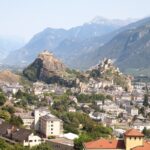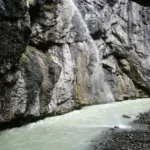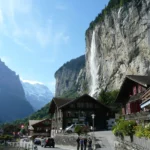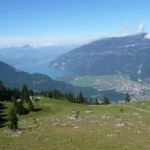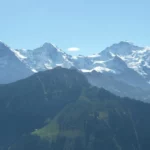Last Updated on 25/02/2023
For the capital,, Bern is a rather small city, but, like any normal capital, it is filled with people rushing somewhere. The historic center is small, for some reason trams and buses run on it, and this, especially trams, does not paint it at all: the narrow streets are entangled with wires, and tourists all the time strive to get under the wheels.
A couple of hours will be enough to inspect the center, to which, if you wish, you can add a museum or a zoo, a botanical garden, a thermal pool.
You can also read
Around Lake Neuchâtel – what to see: Neuchatel, Biel, Murten
Fribourg
Jungrau region. 8. Lake Thun (Thunersee)
Jungfrau region. 3. Lauterbrunnen, Mürren, Wengen
Lake Luzern. Rigi, Tierpark Goldau
Solothurn
A little history
Bern was founded in 1191 by Duke Berchtold 5 von Zähringen. Legend has it that the duke decided to name the city after the animal he would kill while hunting. The bear was unlucky, and he gave a name to the city, and at the same time became its symbol. In 1220 Bern received the status of a “free imperial city”.
After the fire in 1405, the buildings were rebuilt in stone. By 1536 Bern had become the largest city north of the Alps.
In the 17-18 centuries the city was in its heyday. Many of the facades of the houses have been redesigned under the influence of the Baroque style.
Since 1848 Bern has been the capital of Switzerland.
The historic city has been declared a UNESCO cultural heritage site.
Bern tourist map
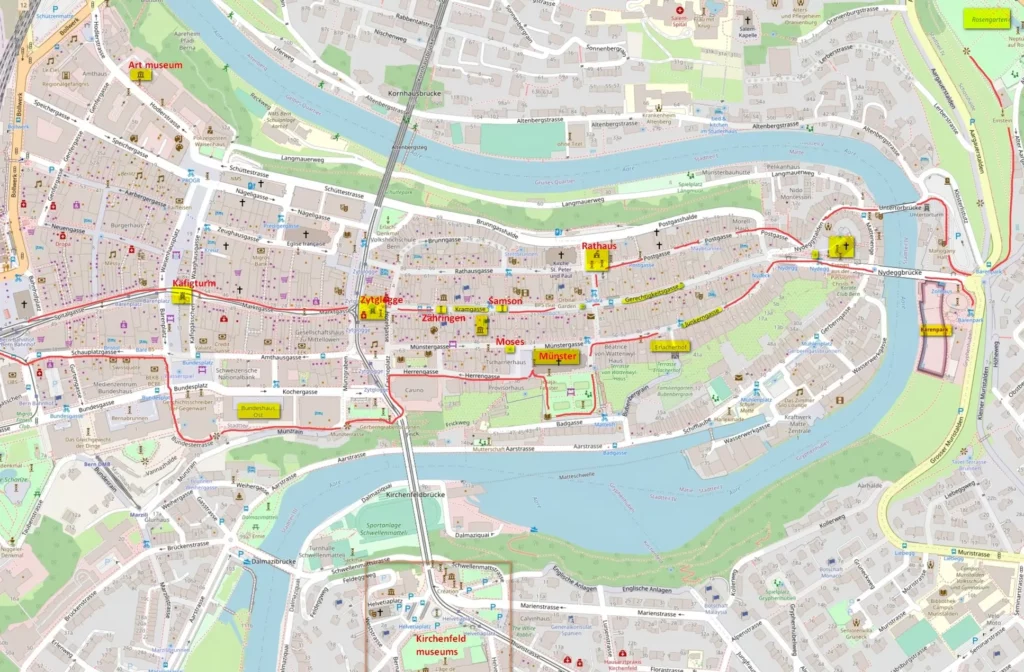
Bern what to see
Old city
Not far from the station there is a long complex, with all its appearance emphasizing its official purpose – the building of the Parliament and the Government of Switzerland, built in the second half of the 19th century.
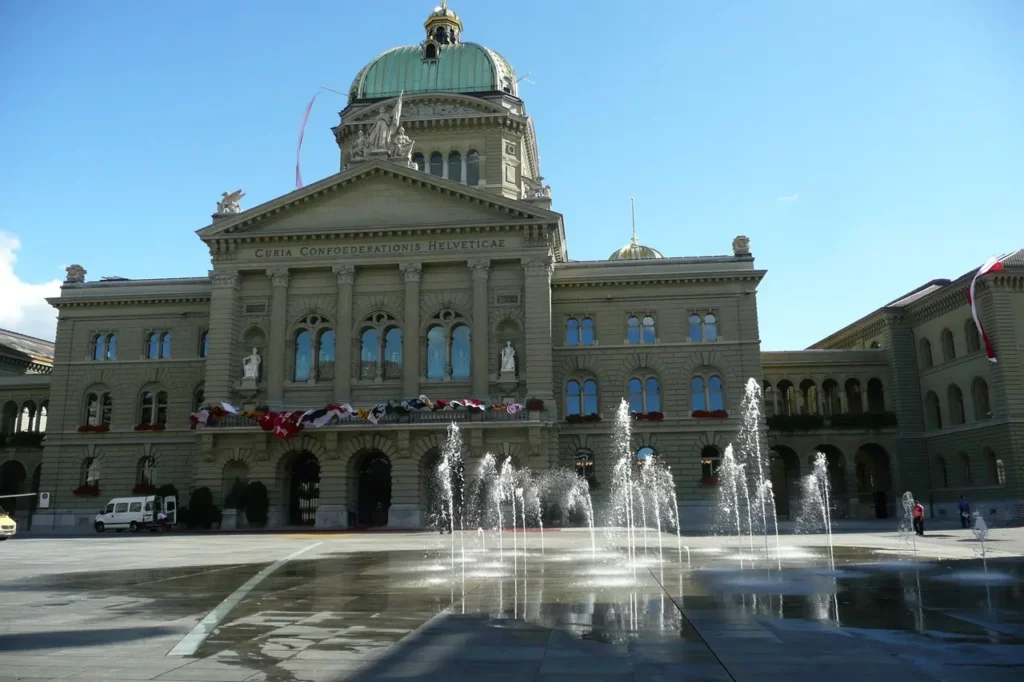
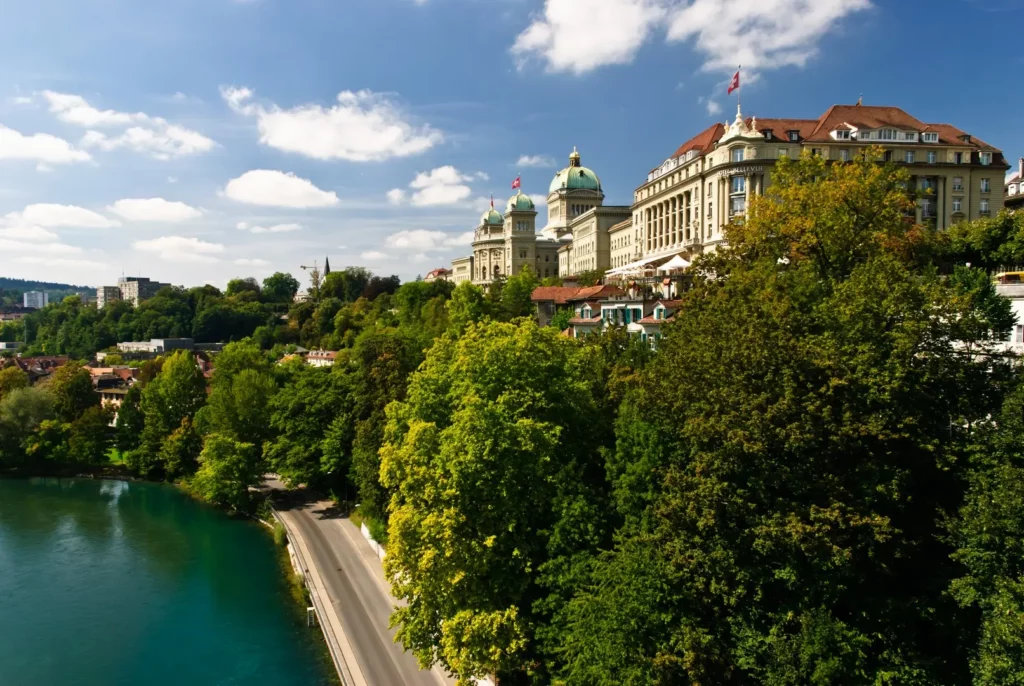

Behind the building is the Federal Terrace overlooking the city and the Aare River. A bridge across the river leads to the Kirchenfeld museum complex, which houses several museums (more details below).
The Old Town (Altstadt) is built in a “gallery” style: rows of identical houses with galleries on the ground floors and awnings on top, all of gray dull sandstone. The city has 6 km of arcades designed to protect the pedestrian from the sun or rain, influenced by the Italian Renaissance architecture. On three sides, the old town is bordered by the Aare river, which forms a loop, and on the fourth side, the border is formed by the station.
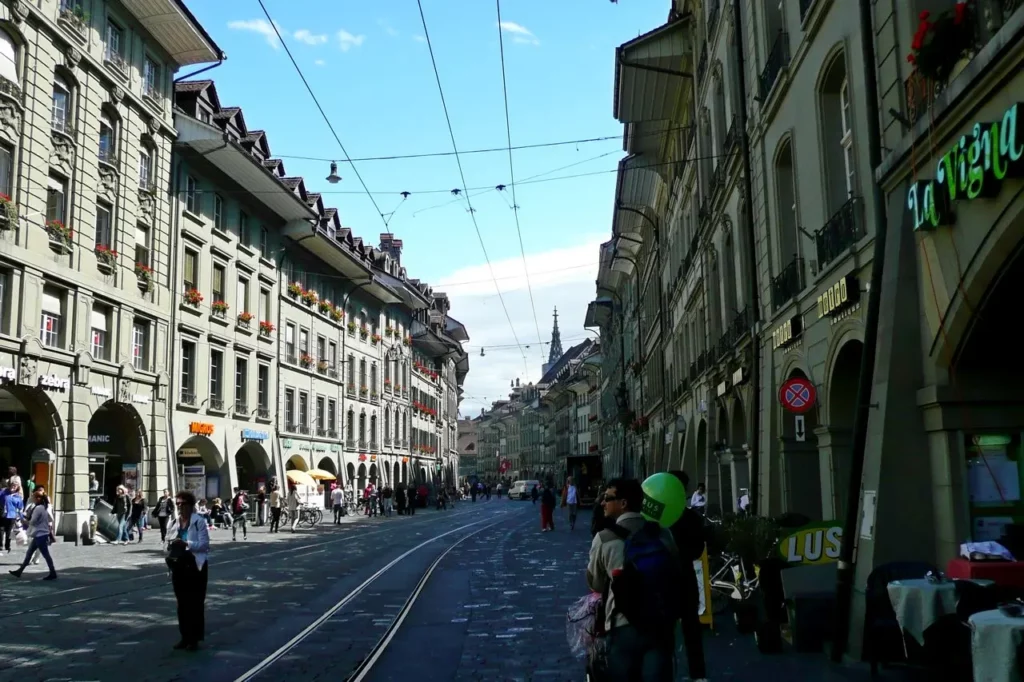
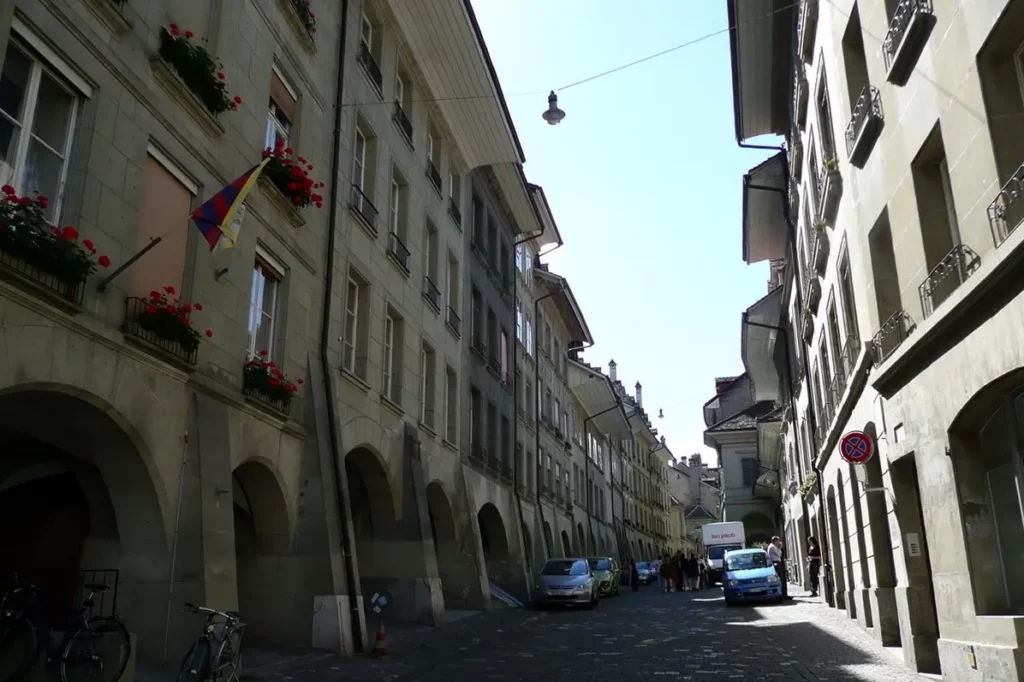
Bern Cathedral
Continuing on our way further in the same direction along the river, we approach Münster. Cathedral of St. Vincent in late Gothic style was built from 1421 until the end of the 19th century, when the tower was completed. You can climb it to view the panorama.
The cathedral is adorned with curious sculptures (for example, the scene of the Last Judgment at the entrance) and preserved colored stained-glass windows from the 15th century (choirs).
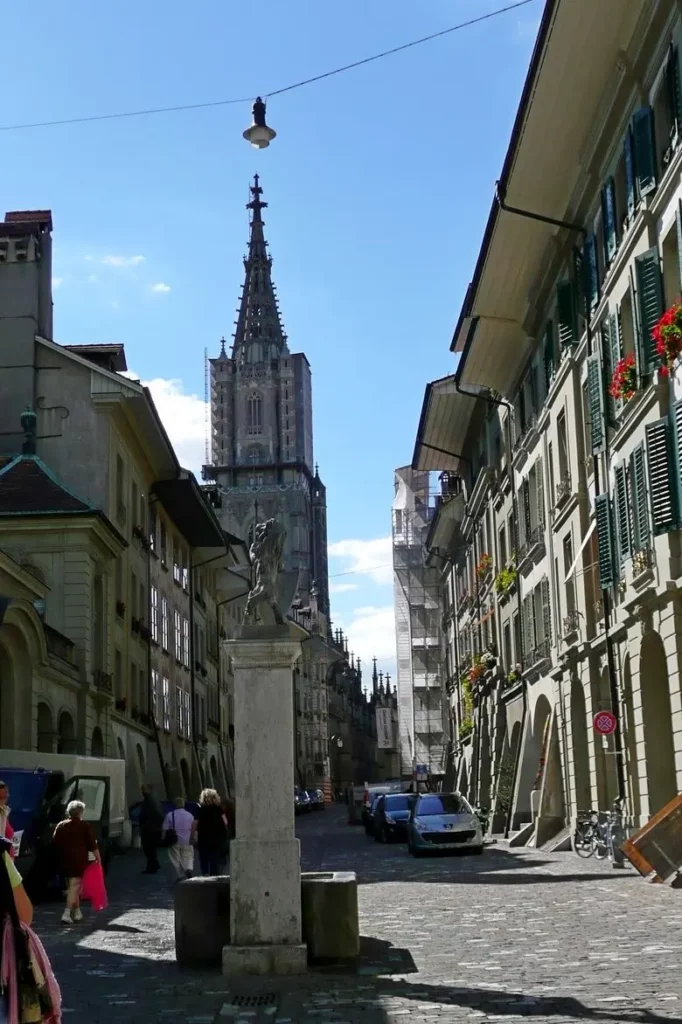
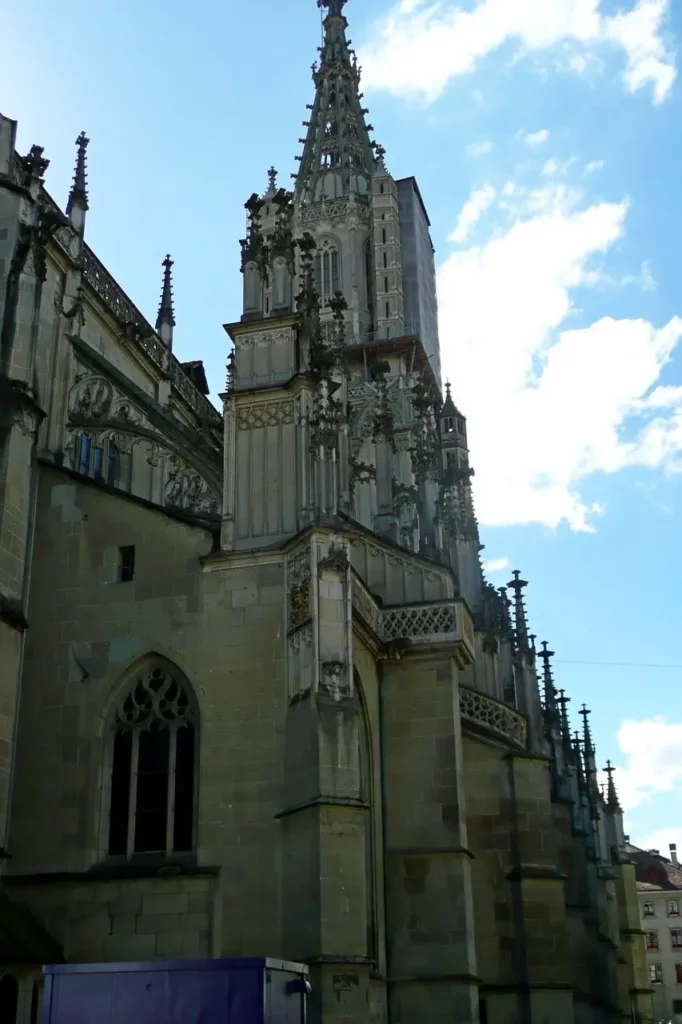
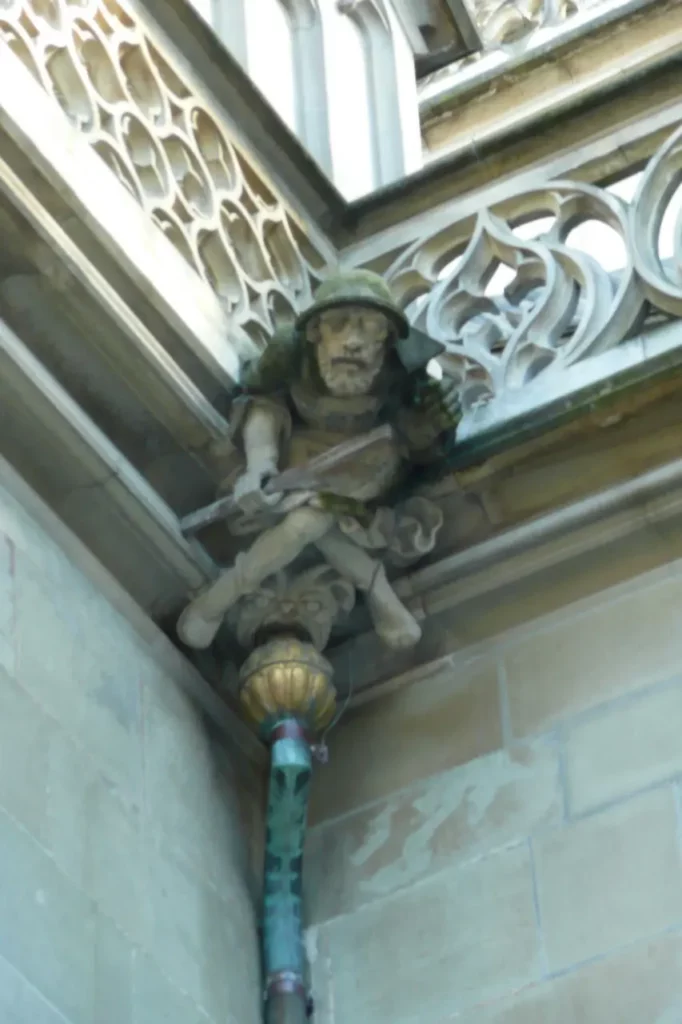
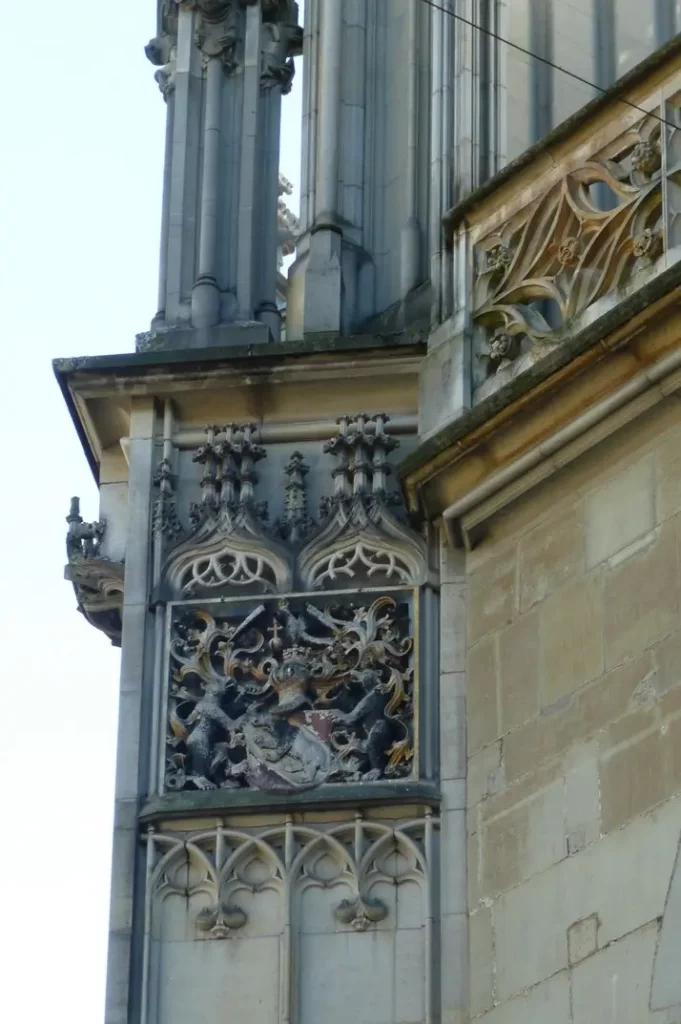
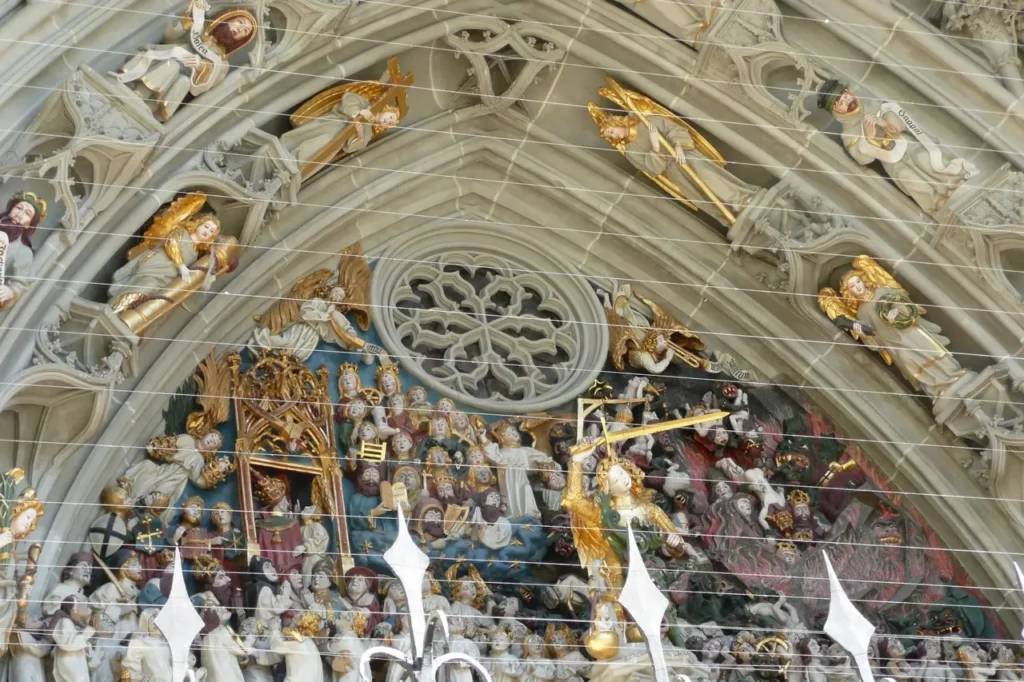
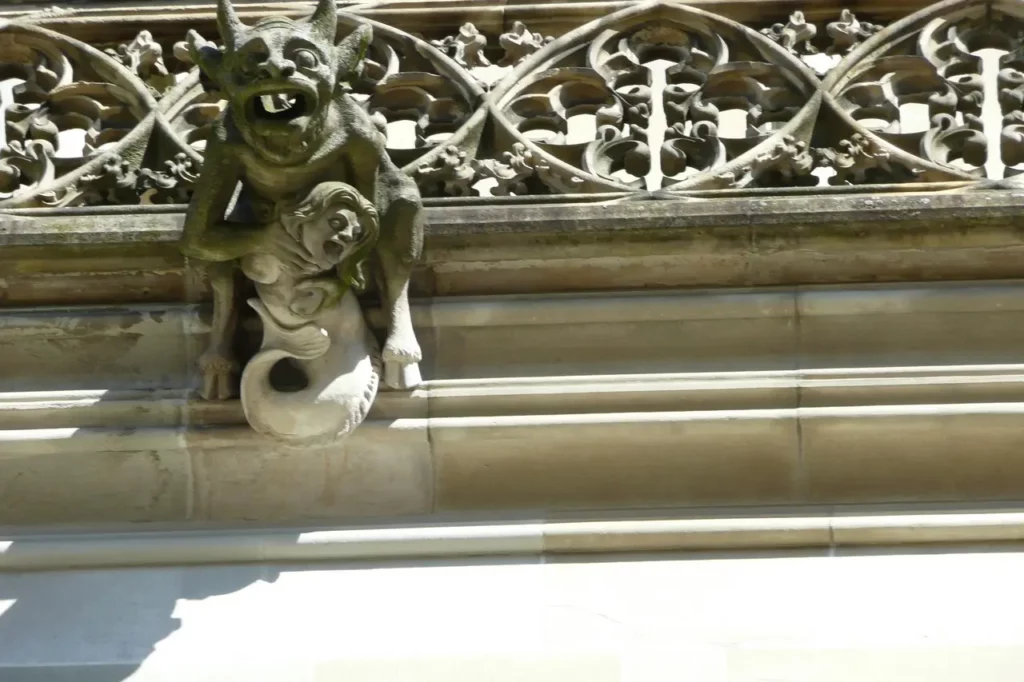
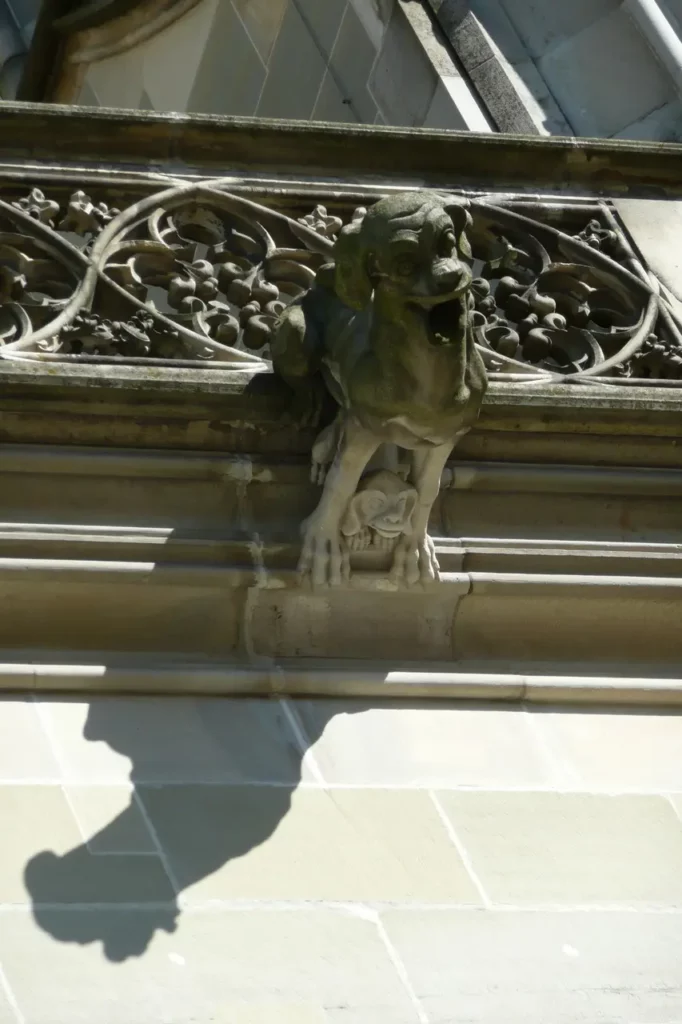
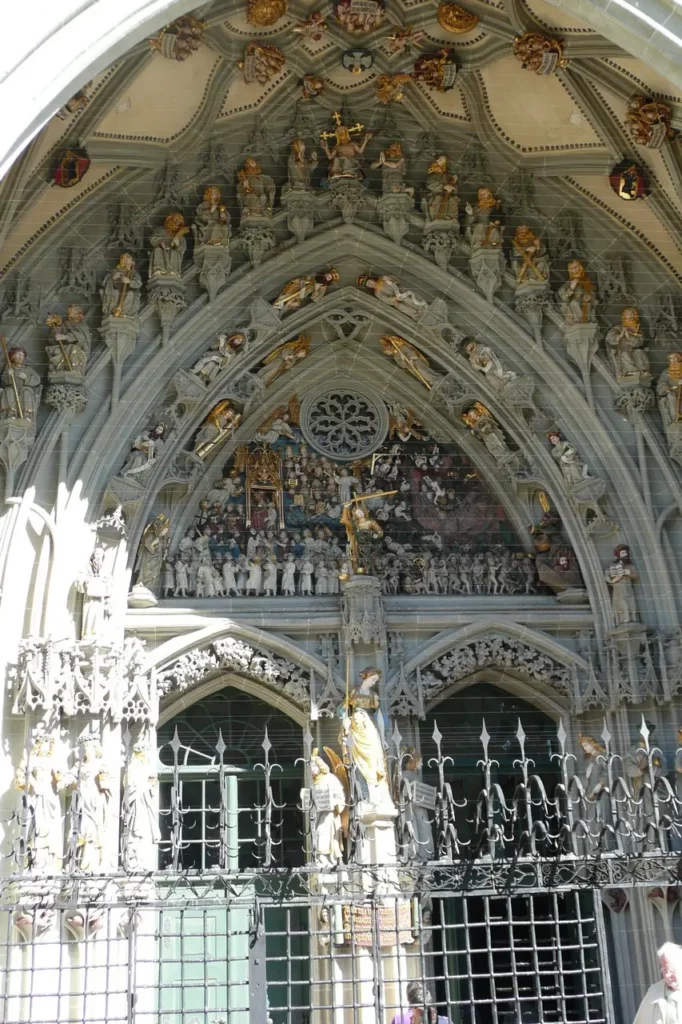
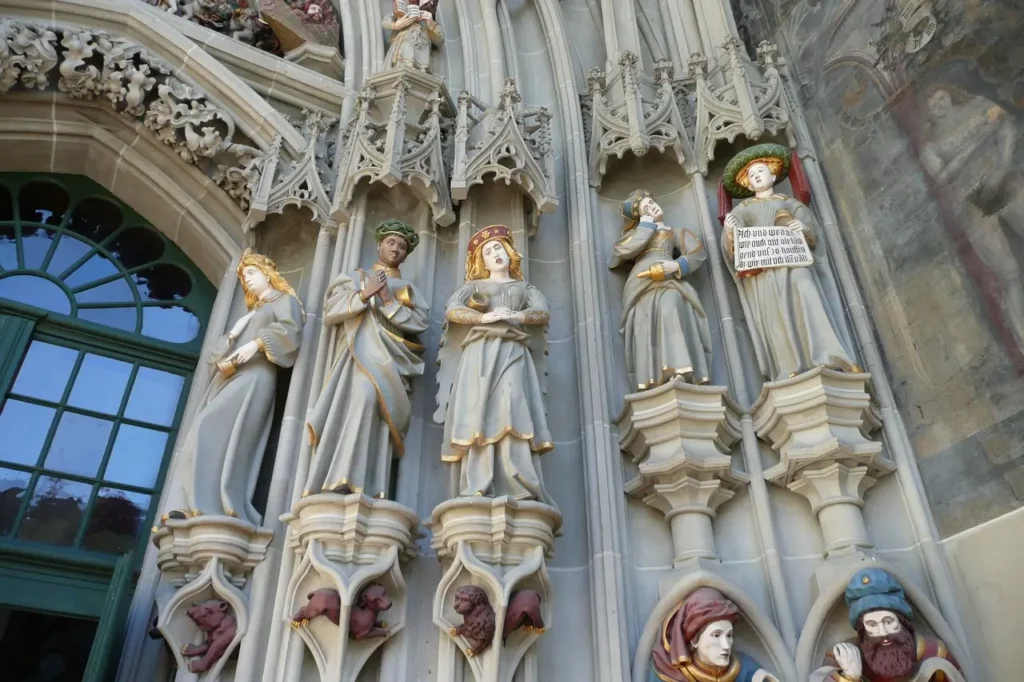
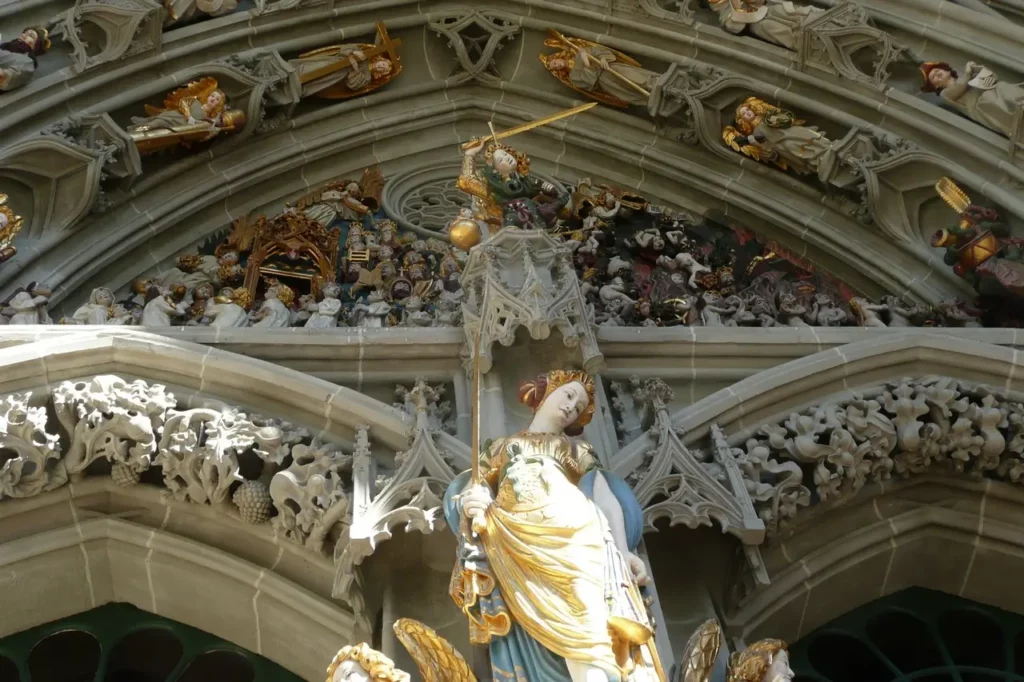
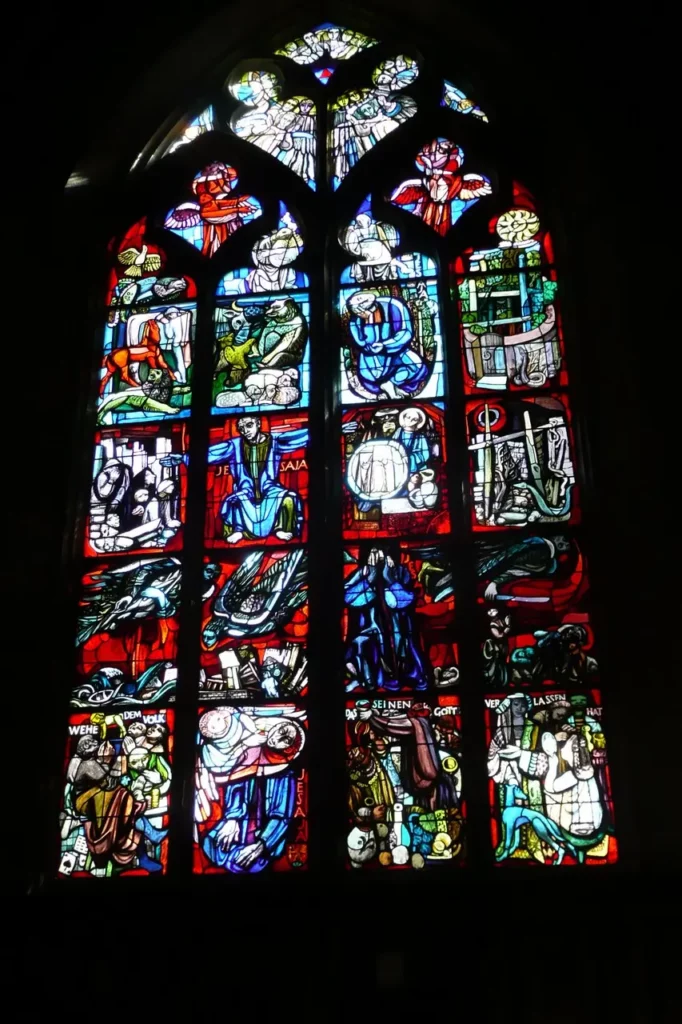

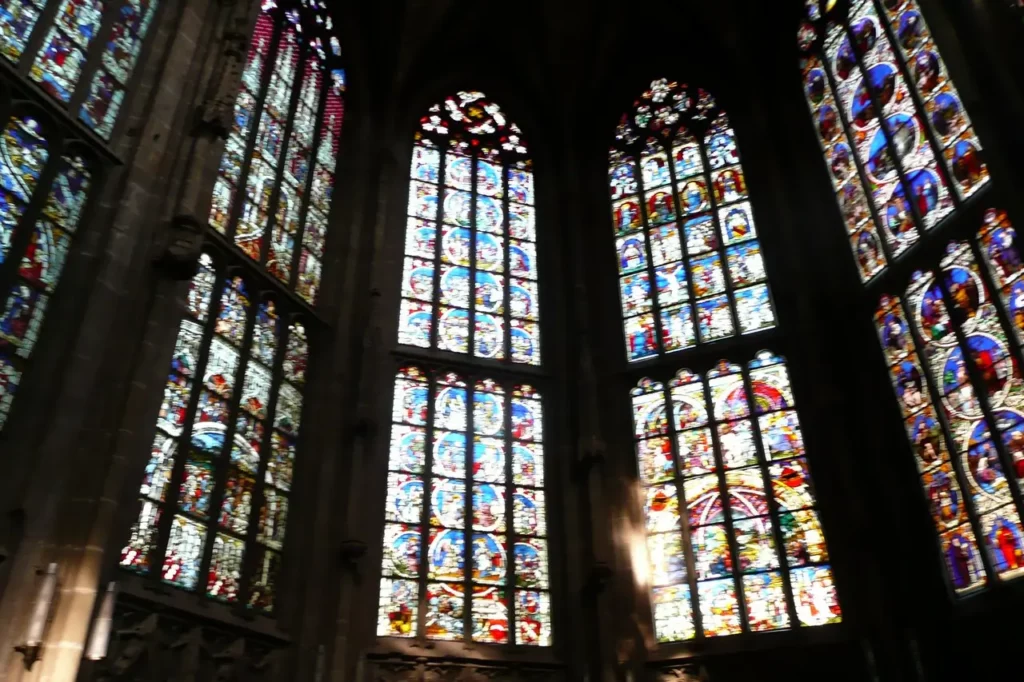

Behind the cathedral there is another terrace overlooking the river.
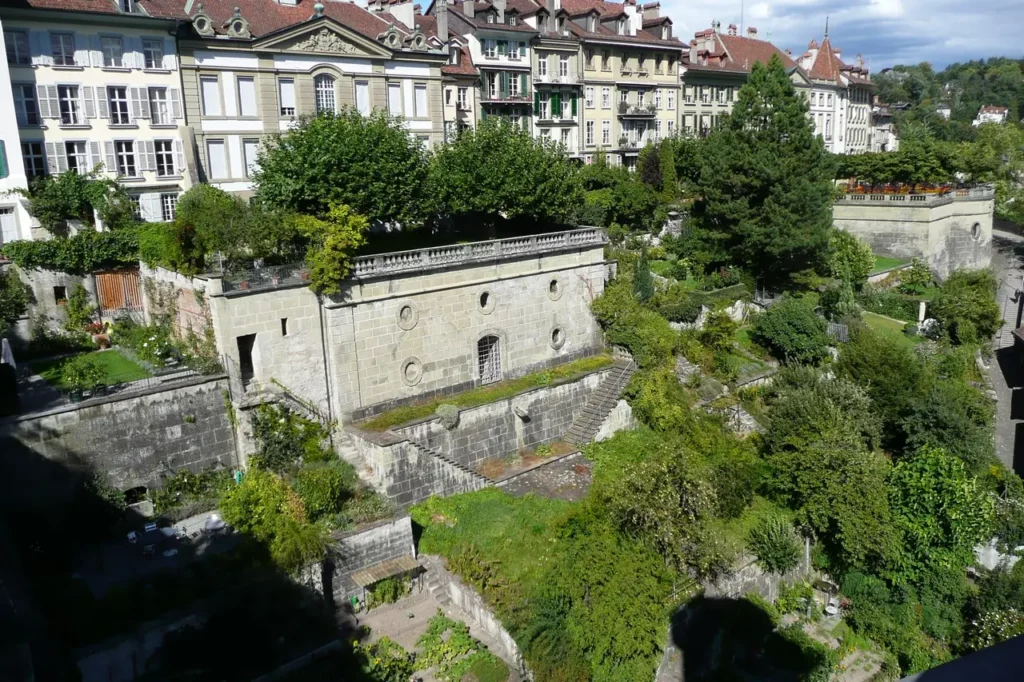

The Kirchenfeld Museum Complex is on the other side.
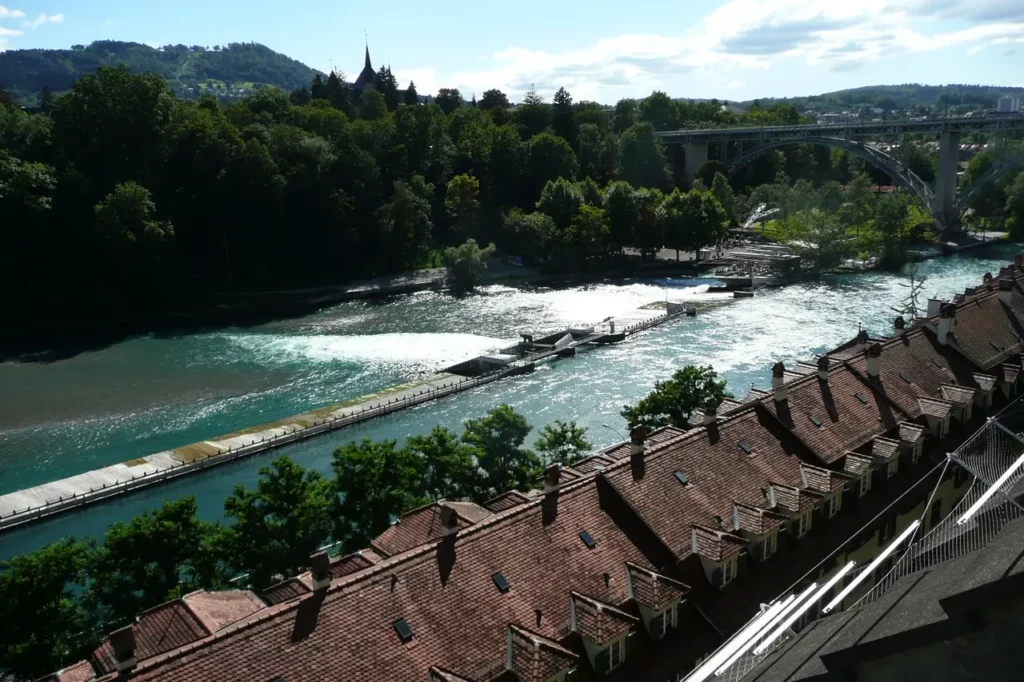
Bern Fontains
Throughout the city you can often find “fountains” – columns with figures and a little water below. Be careful when photographing these fountains: in the middle of the street near them there are for some reason open and not fenced off drains with water.
One of them is near the cathedral – the source of Moses (Mosesbrunnen, 1791).

From the cathedral we go further – along Junkergasse street. This street and the neighboring Gerechtigkeitsgasse are the oldest houses that belonged to the wealthy townspeople and guilds. We met a couple houses with a painting. I must say that this architecture looks much nicer with paintings and flowers on the windows.


Not far from the cathedral you will find a rich Baroque house, Erlacherhof (1752), which belonged to the mayor of Bern, Hieronymus von Erlach. It is now the seat of the mayor and the city government.
Bears
Finally we go to the river. There was once a castle on the site of a church (15th century) by the river, before the founder of the city noticed this place.
There is a large park for bears across the river. Residents of the city feel indebted to the unfortunate animal and compensate for the damage to nature as best they can. A new landscaped area for animals, with conditions close to natural, was opened in 2009. Here you can look not only at bears, but also at an exhibition representing the history of the city.

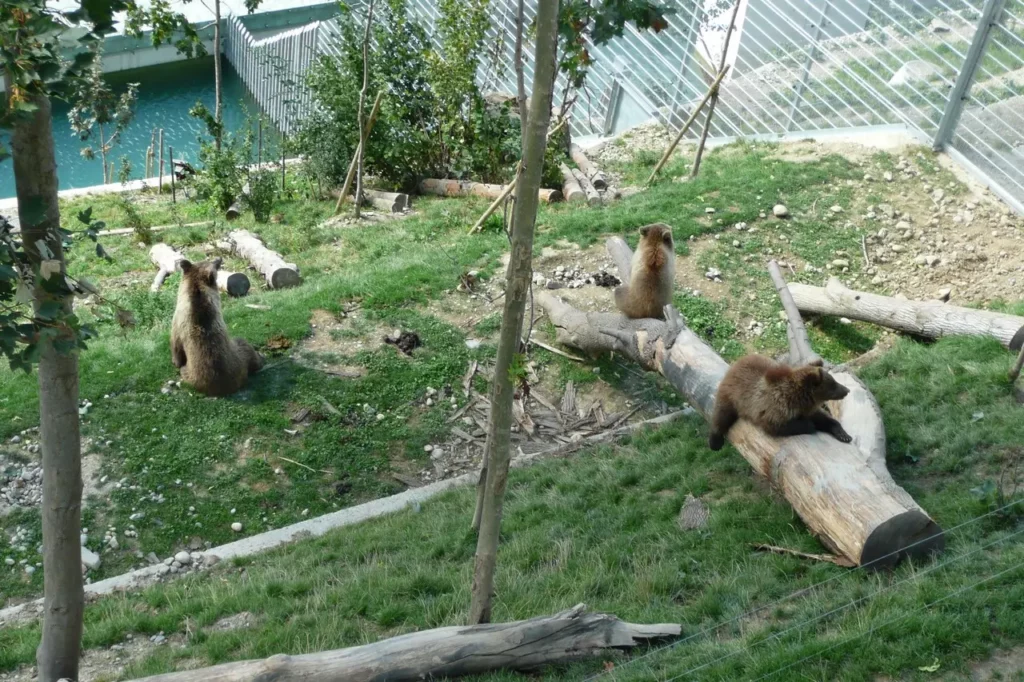
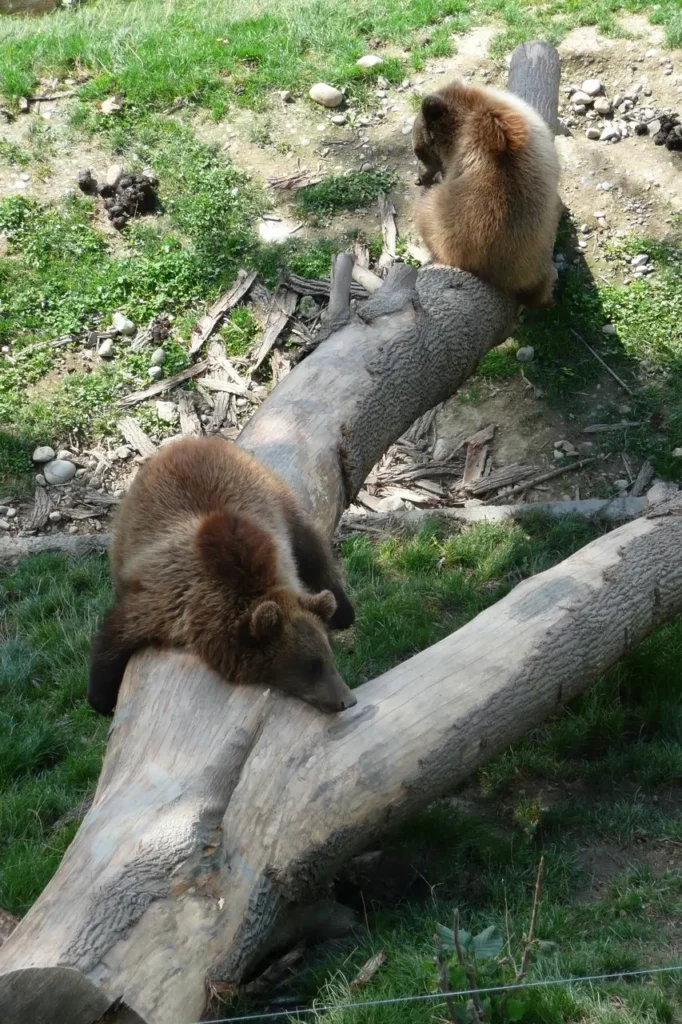

Another panorama of the city opens from the hill above the river from Rosengarten. In summer, you can admire not only the city, but also the roses. Unfortunately, you will have to climb with your feet, since bus (number 10) in this direction can only be taken in the very center.
Rathaus
We return to the old city along the other, lower bridge and admire the emerald water of the Aare.
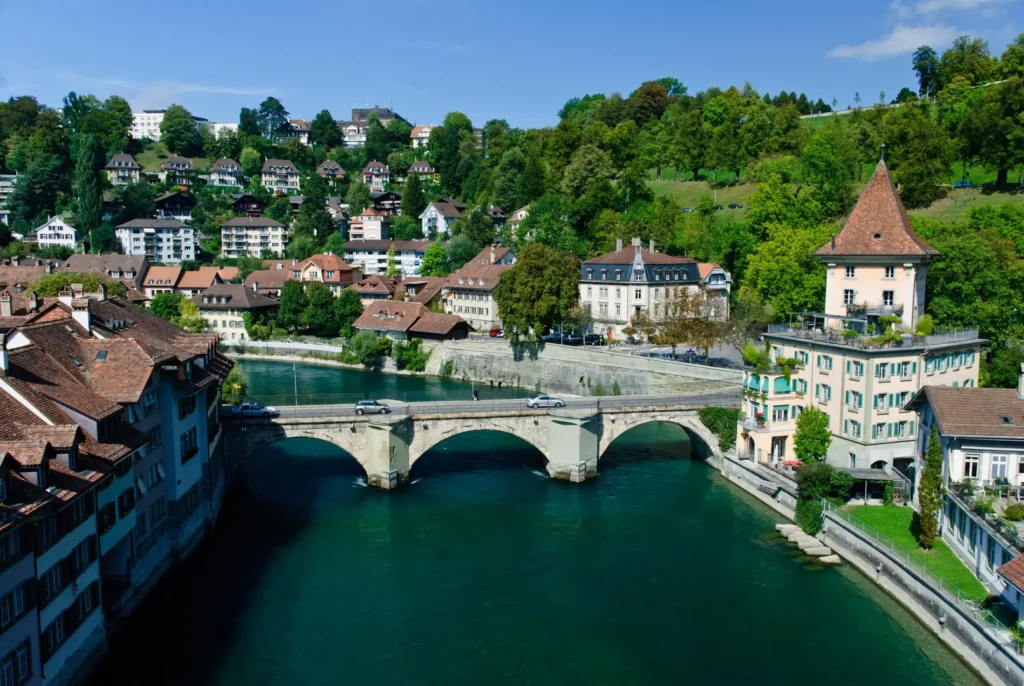
The next stop is the town hall. In this building (early 15th century, Gothic façade) the government of the canton met and sat. During its existence, the building has undergone repeated alterations.
The nearby neo-Gothic church dates back to the middle of the 19th century.

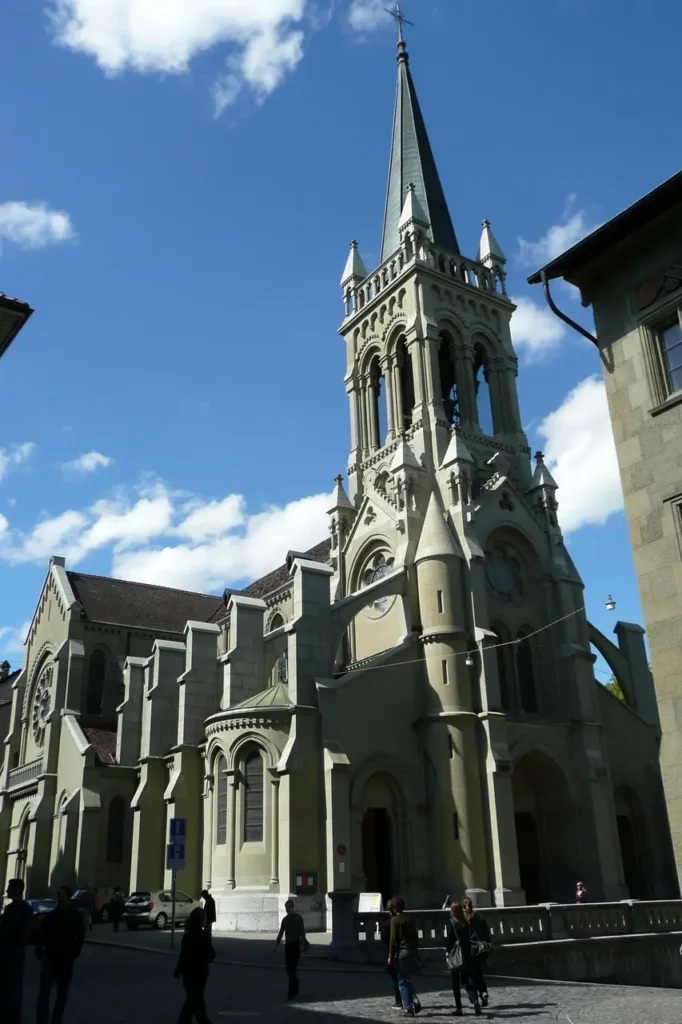
Then we go along Kramgasse. No significant change in appearance – all the same rows of gray arcades and three “fountains” (two mid-16th century (Samson with a lion and Berthold, founder of the city) and one 18th century).

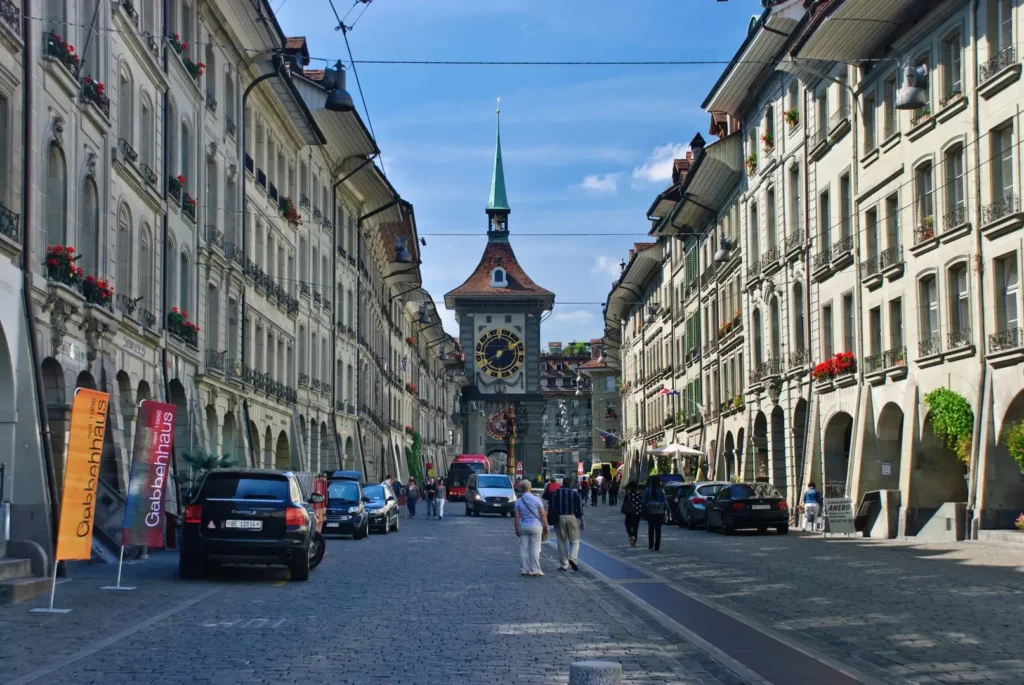
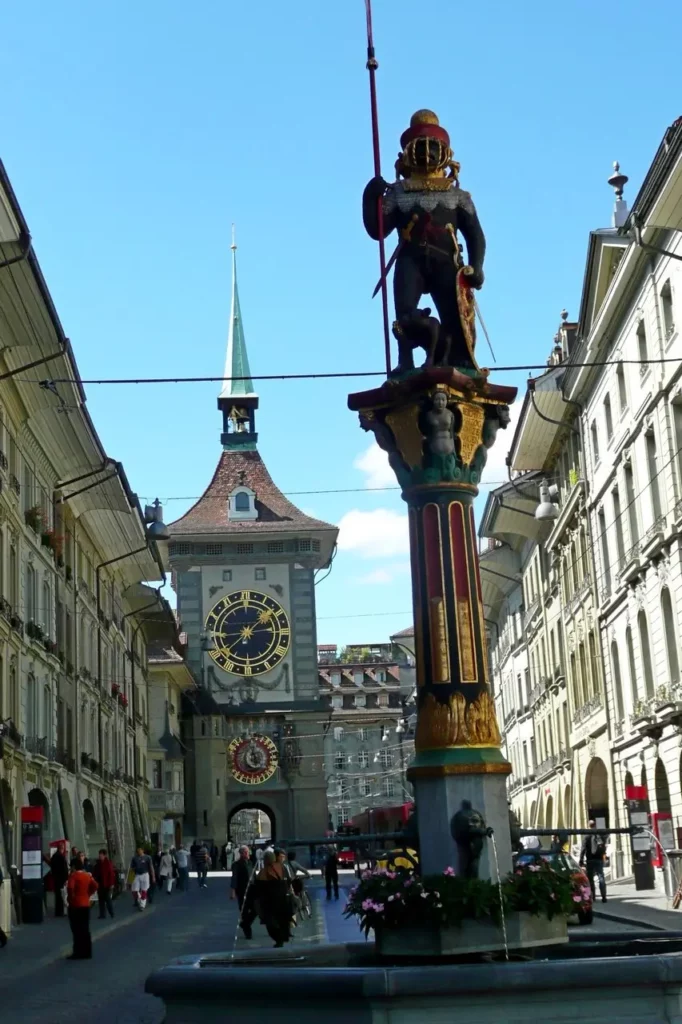
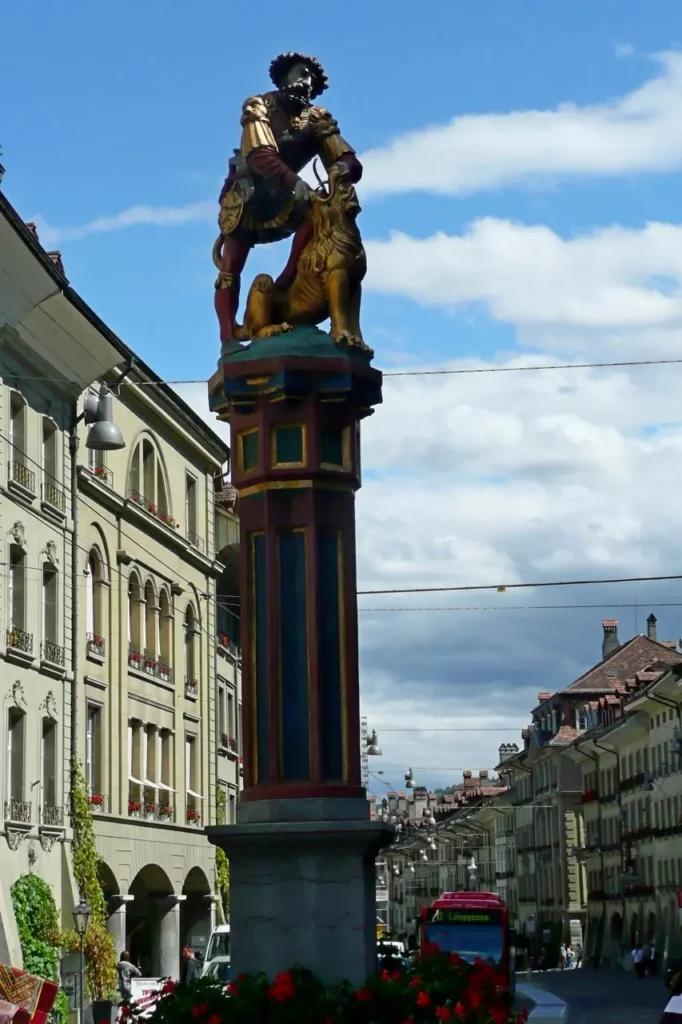
Albert Einstein lived on this street at number 49 for two years. Now there is a museum (museum-apartment, in Bern there is also an Einstein Museum).
Bern clock tower
At the end of the street is the Clock Tower (Zeitglockenturm (Zytglogge)), one of the most common views of the city. In the 12-13th centuries it was the gateway to the city. In 1405 the tower was badly damaged by fire and was rebuilt. It housed a prison for women of easy virtue. Clock was added in 1530.
The tower can be accessed with a guided tour from the Bern Tourist Office. The clock plays at four minutes of every hour.
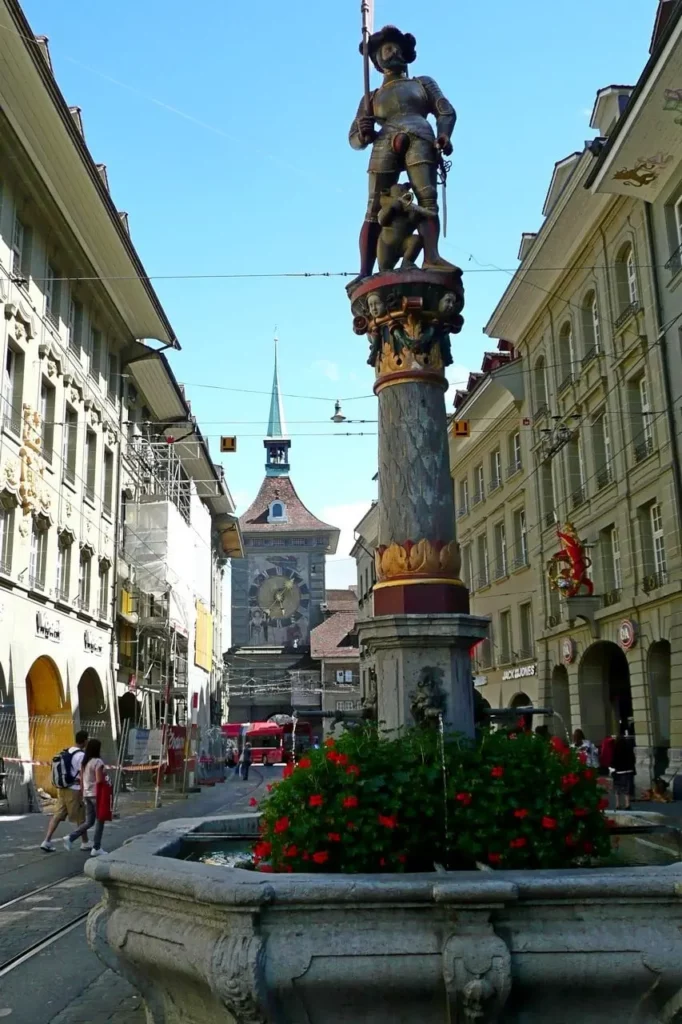
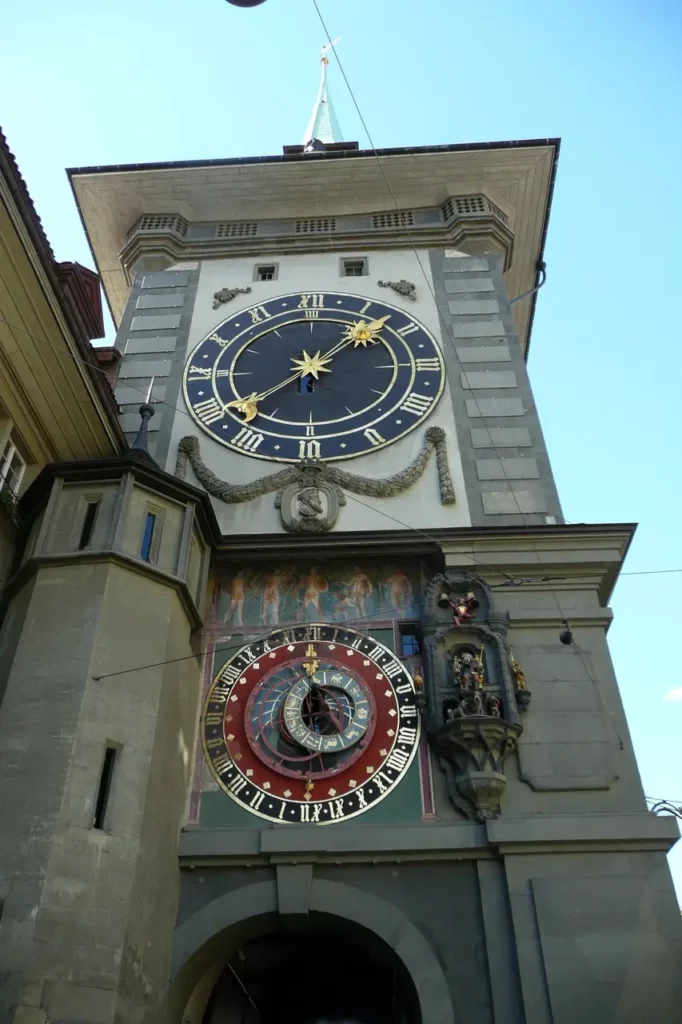

Further along the same street, there is another tower (Käfigturm, Prison), behind it there are two large squares, passing one into the other. Trams pass right under the tower. Around this tower there is the densest concentration of people, transport and tram lines, sandwiched by a narrow old street.
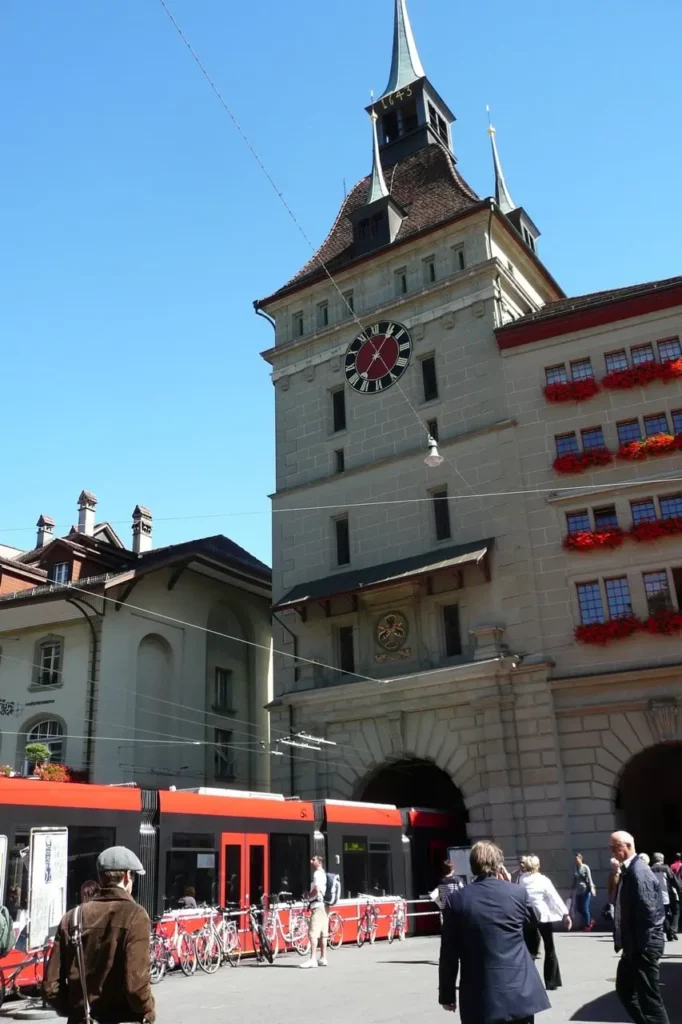

Follow me
For some time, in the 13-14 centuries, the tower was also a city gate, and then for a long time served as a prison. Now seminars, exhibitions, meetings on the topic of politics are held here.
Actually, this is where a short walk through the old town ends. If you do not get distracted from the main route and do not go anywhere, then it will not take very long. What other cultural activities are offered?
What to visit
In addition to the bear park, there is a zoo in the city. Theoretically, you can walk to it along the river, but it is better to use transport.

Among the entertainment related to outdoor recreation, we will also name the botanical garden and the cable car to Bern’s “home” mountain Gurtenbahn. Mountain has an observation terrace, a restaurant, a children’s playground and a small railway.
The thermal pool Bernaqua Erlebnisbad is worth your attention. The pool is located in a shopping center, opposite the entrance to the pool – a children’s playground where kids can be taken while shopping.
Inside there are dozens of pools of different temperatures, different salinity, with various entertainments, up to cartoons that are shown on the wall in the salt pool. There are several slides, all sorts of games with water are provided for children, and for the little ones there is a very nice pool. Those who wish can also combine the pool with saunas, Roman baths or fitness.
Cultural entertainment is represented by a dozen museums, many of which are located in the Kirchenfeld museum quarter:
- Museum of Natural History,
- Museum of Communications,
- Swiss Shooters Museum,
- historical Museum,
- Swiss Alpine Museum,
- art gallery (Kunsthalle).
The Historisches Museum displays exhibitions devoted, as it should be, to the history of the city / canton / country. Among the exhibits are finds from the Bronze period, ancient works of Venetian masters, Burgundy tapestries of the 15th century and etc.
In the same building as the historical museum is the Einstein Museum – the life and work of the famous scientist.
Museum of Communications is the story of the means that help people communicate and understand each other.
Swiss Alpine Museum (Schweizerisches Alpines Museum) presents the history, culture, geology and ecology, modern life of the Swiss Alps.
The following museums are located in the old town: Einstein’s apartment museum, in which he lived for 2 years, and an art museum.
The Art Museum, Switzerland’s oldest, exhibits a collection of works of art from the Gothic to modern times, including works by the Italian masters of the early Renaissance, Manet, Cézanne, Monet, Pissarro, Renoir, van Gogh, Toulouse-Lautrec, and others.
Collection of Paul Klee’s works was separated from the art museum and the Paul Klee Center was established. It is not located in the city center, but it is easily accessible by transport.
Also for an amateur: a museum of psychiatry, showing how the treatment of patients has developed – from asylums to modern centers. The museum is located in the premises of the clinic.
Next – Bernese Highlands #Jungfrau Region
Region around Lake Neuchatel: Neuchatel Lake. 1. Estavayer
Solothurn
Switzerland by car
Transport in Bern and the Bernese Highlands, guest cards.
Do you enjoy the site without cookies? This means that I work for you at my own expense.
Perhaps you would like to support my work here.
Or change your cookie settings here. I don’t use personalized ads


